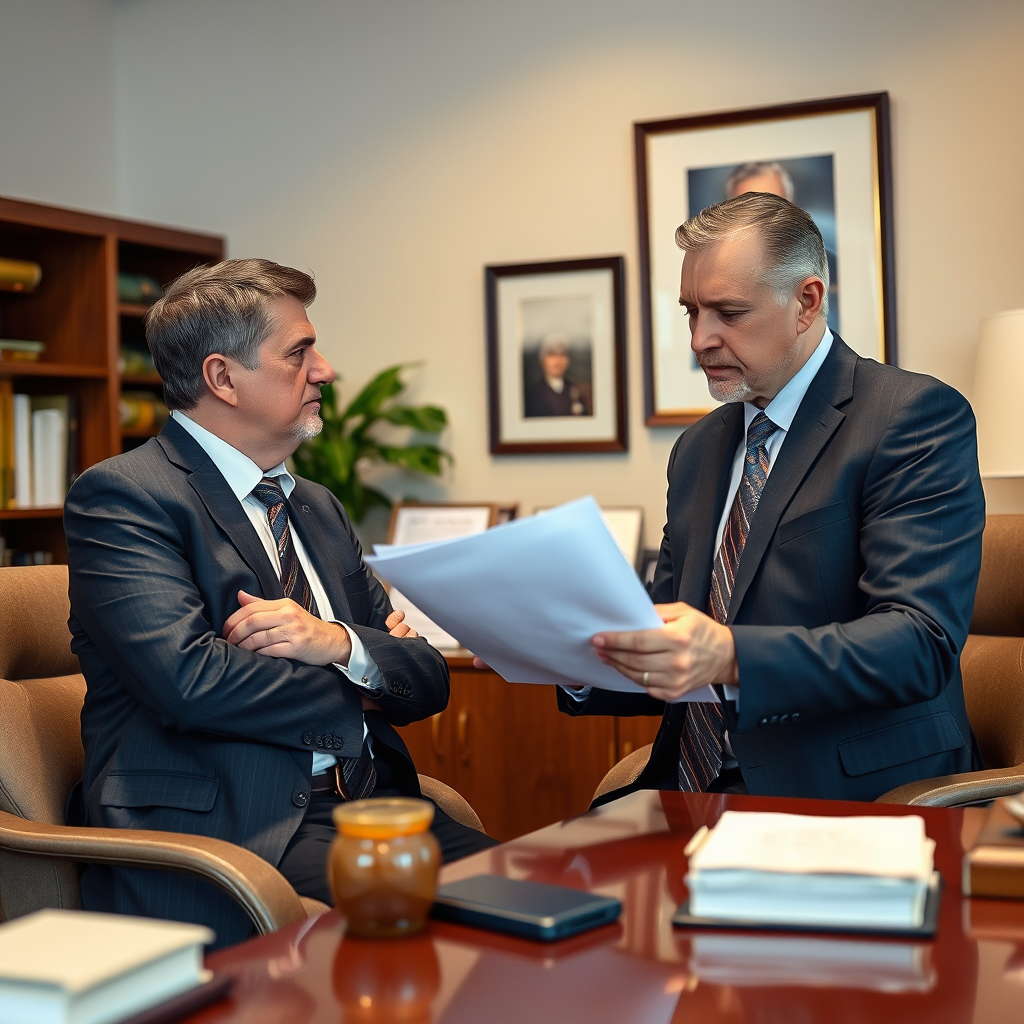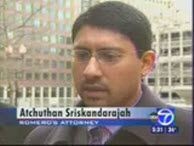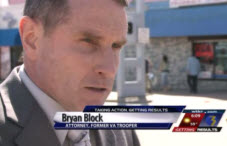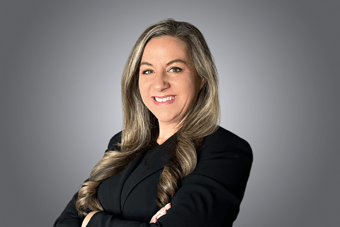
Virginia Pedestrian Accident Attorney: Your Guide to Crosswalk & Car Hit Pedestrian Claims
As of November 2025, the following information applies. In Virginia, pedestrian accidents involve legal complexities stemming from injuries sustained by individuals struck by vehicles, often in crosswalks or while walking. Securing legal counsel is vital for recovering damages, understanding liability, and navigating insurance claims. The Law Offices Of SRIS, P.C. provides dedicated legal defense for these matters.
Confirmed by Law Offices Of SRIS, P.C.
What is a Pedestrian Accident in Virginia?
A pedestrian accident in Virginia happens when a person on foot, a bicycle, a skateboard, or even using a wheelchair is hit by a motor vehicle. These incidents can occur anywhere – a busy intersection, a quiet residential street, or even a parking lot. What defines it legally is the pedestrian’s vulnerability compared to the driver of a car or truck. The law recognizes that pedestrians have certain rights, especially in designated crosswalks, but also carry responsibilities. When a vehicle strikes a pedestrian, the resulting injuries can be life-altering, ranging from minor scrapes to severe trauma, including broken bones, head injuries, and spinal cord damage. The immediate aftermath is often chaotic and terrifying, leaving victims scared and unsure of what to do next. It’s not just about the physical pain; there’s also the emotional shock and the sudden burden of medical bills, lost wages, and a disrupted life.
Understanding the legal framework in Virginia is essential because fault, or liability, plays a significant role in how these cases proceed. Virginia is a contributory negligence state, which means if you, as the pedestrian, are found even 1% at fault for the accident, you might be barred from recovering any compensation. This makes the early investigation and gathering of evidence incredibly important. Many people mistakenly believe that if they were hit by a car, the driver is automatically at fault. While often true, especially in cases where drivers fail to yield or are distracted, it’s not always a straightforward conclusion in the eyes of the law. This is why having knowledgeable legal representation from the outset can make a profound difference in the outcome of your claim, protecting your rights and ensuring a thorough examination of all contributing factors.
These accidents can also involve unique circumstances. For instance, a crosswalk injury might seem simple, but factors like traffic signals, pedestrian signals, visibility, and driver awareness all come into play. Was the driver speeding? Were they distracted by a phone? Did they fail to stop at a red light or stop sign? Was the pedestrian crossing against a signal or outside a designated crosswalk? These are the kinds of questions that must be answered to establish fault and pursue a successful claim. Beyond the immediate physical injuries, pedestrian accidents often lead to long-term consequences, including chronic pain, psychological distress, and a reduced quality of life. The legal process aims to address these damages, seeking compensation not only for direct medical costs and lost income but also for pain and suffering, emotional trauma, and future care needs. It’s a comprehensive approach to help victims rebuild their lives after such a devastating event.
**Takeaway Summary:** A pedestrian accident in Virginia involves a motor vehicle striking a person on foot, bicycle, or wheelchair, with Virginia’s contributory negligence laws making fault a critical factor in recovery. (Confirmed by Law Offices Of SRIS, P.C.)
How to Protect Your Rights After a Pedestrian Accident in Virginia?
Getting hit by a car as a pedestrian is a frightening experience, and in the confusion that follows, it can be tough to think straight. But what you do in those first moments and days can have a huge impact on your ability to recover compensation for your injuries. It’s not just about getting medical attention, which is always the absolute priority, but also about securing crucial evidence and understanding the legal steps you need to take. Think of it like this: every step you take, or don’t take, is part of building your case. Missing a detail or delaying an action could weaken your position significantly. This isn’t just legal talk; it’s real advice for a real, scary situation. Here’s what you need to do, step by step, to protect yourself and your rights after a pedestrian accident in Virginia, especially when dealing with injuries sustained in a crosswalk or from a car hitting a pedestrian.
- **Seek Immediate Medical Attention:** Your health is paramount. Even if you feel okay, some serious injuries, like concussions or internal bleeding, might not show symptoms right away. Go to the emergency room or see a doctor as soon as possible. Get a thorough examination and follow all medical advice. Documenting your injuries from day one creates an undeniable record of the accident’s impact on your body. Don’t downplay your pain or try to tough it out; be honest and detailed with medical professionals.
- **Contact the Police and File a Report:** If law enforcement hasn’t already been called to the scene, call them. An official police report provides an objective account of the accident, including details like the date, time, location, vehicles involved, and often initial observations about fault. This report is a vital piece of evidence for any future legal claim. Make sure to get the report number and the officer’s contact information.
- **Gather Information at the Scene (If Able):** If your injuries allow, collect as much information as possible. This includes the driver’s name, contact information, insurance details, and license plate number. Get the names and contact information of any witnesses. Take photos or videos of the accident scene, your injuries, vehicle damage, traffic signals, skid marks, and anything else relevant. Every detail, no matter how small, could be useful later.
- **Do Not Admit Fault or Give Recorded Statements:** Virginia is a contributory negligence state, meaning admitting even partial fault can destroy your claim. Do not apologize, say “I’m okay,” or make any statements that could be interpreted as admitting responsibility. You are not obligated to give a recorded statement to the other driver’s insurance company without legal counsel present. Politely decline and refer them to your attorney.
- **Preserve Evidence:** Keep all documentation related to the accident. This includes medical bills, receipts for expenses (like transportation to appointments), lost wage statements, and any communication with insurance companies. If you had clothes or items damaged in the accident, keep them. Maintain a journal of your pain, limitations, and emotional distress since the accident. This helps quantify non-economic damages.
- **Consult with an Experienced Virginia Pedestrian Accident Attorney:** This is perhaps the most important step. A seasoned attorney will understand Virginia’s complex laws, including contributory negligence, and work to protect your rights. They can investigate the accident, gather evidence, negotiate with insurance companies, and if necessary, represent you in court. Seeking legal counsel early ensures that crucial deadlines are met and that you don’t inadvertently harm your own case. A confidential case review can help you understand your options without commitment.
Remember, the moments after a pedestrian accident are overwhelming. You might be in pain, confused, and worried about the future. But by taking these deliberate steps, you’re not just reacting; you’re proactively building the foundation for your recovery and ensuring that you have the best possible chance to receive the compensation you deserve. It’s about taking control back when so much feels out of control. Don’t go it alone; knowledgeable legal support is there to guide you through this difficult journey, helping you to find clarity and hope amidst the chaos.
Can I Still Recover Compensation If I Was Partially at Fault for a Pedestrian Accident in Virginia?
This is a fear that looms large for many people who have been involved in a pedestrian accident in Virginia. You might be thinking, “What if the driver says it was my fault? What if I stepped off the curb too soon, or wasn’t in the crosswalk? Does that mean I get nothing?” It’s a very real concern, and it goes right to the heart of Virginia’s legal system. The blunt truth is that Virginia operates under a strict legal principle known as contributory negligence. This rule is unforgiving: if you are found even slightly responsible for your own injuries – even 1% at fault – you might be barred from recovering any compensation from the at-fault driver. This is a tough pill to swallow, especially when you’re already dealing with devastating injuries from a car hitting a pedestrian.
However, while the law is strict, it doesn’t mean your situation is hopeless. It means you need dedicated and thorough legal representation to protect your interests. It means that the legal team working on your behalf must be meticulous in their investigation, working to demonstrate that the driver was entirely at fault, or at least that you were not contributorily negligent. For instance, if you were in a crosswalk injury incident, the defense might argue you were distracted. Your attorney would then work to prove the driver failed to yield, was speeding, or engaged in other negligent behavior that was the sole cause of the collision. It’s a challenging legal battle, but it’s one that experienced counsel is prepared to take on.
Consider the nuances: were there mitigating factors? Was the crosswalk poorly marked? Was the driver intoxicated or speeding? Was there poor visibility due to weather or time of day? All these elements can play a significant role in arguing against a claim of contributory negligence. An attorney will meticulously examine police reports, witness statements, traffic camera footage, and even accident reconstruction reports to build a compelling case. They will challenge any assertions of your fault, striving to ensure that the burden of negligence rests where it truly belongs. It’s about ensuring that your side of the story is not only heard but backed by undeniable evidence, allowing you to focus on your recovery without the added stress of legal battles.
Furthermore, there are very specific exceptions and defenses to contributory negligence in Virginia that a skilled attorney would explore. For example, if the driver’s actions were ‘willful and wanton,’ meaning they showed a reckless disregard for your safety, contributory negligence might not apply. This is a high bar, but it highlights the need for a comprehensive legal strategy. Another avenue might involve the ‘last clear chance’ doctrine, which argues that even if you were initially negligent, the driver had the last clear opportunity to avoid the accident but failed to do so. These are complex legal arguments, not easily made without seasoned legal representation.
So, to answer your question directly: recovering compensation when there’s an allegation of partial fault is incredibly difficult in Virginia due to contributory negligence. But it’s not necessarily impossible. What it absolutely requires is immediate action and the support of a knowledgeable pedestrian accident attorney. They are your best defense against having your claim denied outright. Don’t let the fear of partial fault prevent you from seeking justice. Many people assume they were partially at fault when, legally, the primary blame lies squarely with the driver. A confidential case review can shed light on your specific situation, offering clarity and a path forward, even when things seem bleak. The goal is to maximize your chances of securing the financial recovery you deserve to cover medical bills, lost wages, and your pain and suffering.
Why Hire Law Offices Of SRIS, P.C. for Your Virginia Pedestrian Accident Case?
When you’re facing the aftermath of a pedestrian accident, especially one involving a crosswalk injury or a car hitting a pedestrian, the idea of legal action can feel overwhelming. You need someone who not only understands the law but also understands what you’re going through. At Law Offices Of SRIS, P.C., we bring a deep well of experience and a client-focused approach to every case. Our aim is to provide clarity in a time of confusion and instill hope when you feel most vulnerable. We understand the physical pain, the emotional distress, and the financial pressures that suddenly weigh you down after such a traumatic event.
Mr. Sris, our founder, brings a personal commitment to the firm’s mission. He states, “My focus since founding the firm in 1997 has always been directed towards personally handling the most challenging and complex criminal and family law matters our clients face.” While his primary focus has been criminal and family law, the firm’s principles of dedicated representation and rigorous pursuit of justice extend across all practice areas, including personal injury cases like pedestrian accidents. This foundational dedication means that the firm approaches every legal challenge with the same tenacity and commitment to our clients’ best interests. We treat every case with the seriousness and personalized attention it deserves, understanding that for you, this isn’t just a legal matter – it’s your life.
We know that a pedestrian accident isn’t just a series of legal forms and court dates; it’s a disruption to your entire life. From accumulating medical bills to lost income because you can’t work, the financial strain can be immense. Beyond that, there’s the pain, the fear, and the struggle to regain your normal routine. Our seasoned attorneys are here to shoulder that burden for you. We meticulously investigate every detail, from reviewing accident reports and medical records to interviewing witnesses and consulting with accident reconstructionists if needed. Our goal is to build the strongest possible case, proving the other party’s negligence and fighting for the maximum compensation you’re entitled to. We’re not just your lawyers; we’re your advocates, your guides, and your unwavering support system throughout this difficult journey. We explain every step, ensuring you understand what’s happening and why, so you never feel left in the dark.
Dealing with insurance companies alone can be a nightmare. They often try to settle claims for the lowest possible amount, sometimes even pressuring victims to accept offers that don’t cover their long-term needs. Having Law Offices Of SRIS, P.C. by your side means you have a powerful negotiator protecting your interests. We understand their tactics, and we know how to counter them, ensuring that you receive a fair and just settlement. If a fair settlement isn’t possible, we are fully prepared to take your case to court, advocating vigorously on your behalf before a judge and jury. Our track record reflects a firm that is not afraid to stand up for its clients against formidable opponents, always striving for the best possible outcome.
When you choose Law Offices Of SRIS, P.C., you’re choosing a team that combines extensive legal knowledge with genuine empathy. We believe that everyone deserves justice, especially after being injured due to someone else’s carelessness. Let us help you navigate the legal complexities so you can focus on what truly matters: your recovery and getting your life back on track. We’re ready to listen, understand, and fight for you. Our commitment is to offer you clarity, hope, and a path toward a better future. Reach out to us today for a confidential case review. Our Virginia location details are:
Law Offices Of SRIS, P.C.
4008 Williamsburg Court
Fairfax, VA, 22032, US
Phone: +1-703-636-5417
Call now
Frequently Asked Questions About Virginia Pedestrian Accident Claims
What should I do immediately after a pedestrian accident?
First, seek medical attention, even if injuries seem minor. Then, contact the police to file an official report. If possible, gather the driver’s information, witness contacts, and take photos of the scene. Do not admit fault or give statements to insurance companies without legal counsel.
How does Virginia’s contributory negligence rule affect my claim?
Virginia’s strict contributory negligence rule means if you are found even 1% at fault for the accident, you could be barred from recovering any compensation. This makes skilled legal representation essential to prove the driver was solely responsible for the collision.
What types of damages can I recover in a pedestrian accident case?
You may be able to recover economic damages for medical bills, lost wages, and property damage. Non-economic damages, such as pain, suffering, emotional distress, and loss of enjoyment of life, are also often pursued to compensate for the broader impact on your life.
Is it necessary to hire an attorney for a pedestrian accident claim?
While not strictly mandatory, hiring an experienced attorney is highly recommended. They understand Virginia’s complex laws, can investigate thoroughly, negotiate with insurance companies, and protect you from tactics that might undermine your claim, maximizing your recovery.
How long do I have to file a pedestrian accident lawsuit in Virginia?
In Virginia, the statute of limitations for most personal injury claims, including pedestrian accidents, is generally two years from the date of the accident. It’s important to act quickly, as missing this deadline can result in losing your right to sue.
What if the driver who hit me doesn’t have insurance?
If the at-fault driver is uninsured or underinsured, you might still be able to recover compensation through your own auto insurance policy’s uninsured/underinsured motorist (UM/UIM) coverage. An attorney can help you explore these options and navigate the claims process.
What if I was hit in a crosswalk and still being blamed?
Even in a crosswalk, drivers might allege pedestrian fault. An attorney will scrutinize traffic laws, signals, driver distraction, and your actions to demonstrate the driver’s negligence. Evidence is key to overcoming contributory negligence claims in crosswalk injury incidents.
Can I get compensation for emotional distress after a pedestrian accident?
Yes, emotional distress is a component of pain and suffering, which falls under non-economic damages. Documenting the psychological impact, such as anxiety, fear, or PTSD, with medical professionals or therapists can support your claim for these damages.
How much does it cost to hire a pedestrian accident attorney?
Many pedestrian accident attorneys, including Law Offices Of SRIS, P.C., work on a contingency fee basis. This means you don’t pay any upfront legal fees. Instead, the attorney’s payment is a percentage of the compensation they secure for you, so they only get paid if you win.
What evidence is crucial in a pedestrian accident claim?
Key evidence includes the police report, medical records documenting all injuries, photographs or videos of the scene and injuries, witness statements, and any traffic camera footage. An attorney will help you gather and organize this vital information to strengthen your case.
The Law Offices Of SRIS, P.C. has locations in Virginia in Fairfax, Loudoun, Arlington, Shenandoah and Richmond. In Maryland, our location is in Rockville. In New York, we have a location in Buffalo. In New Jersey, we have a location in Tinton Falls.
Past results do not predict future outcomes.






